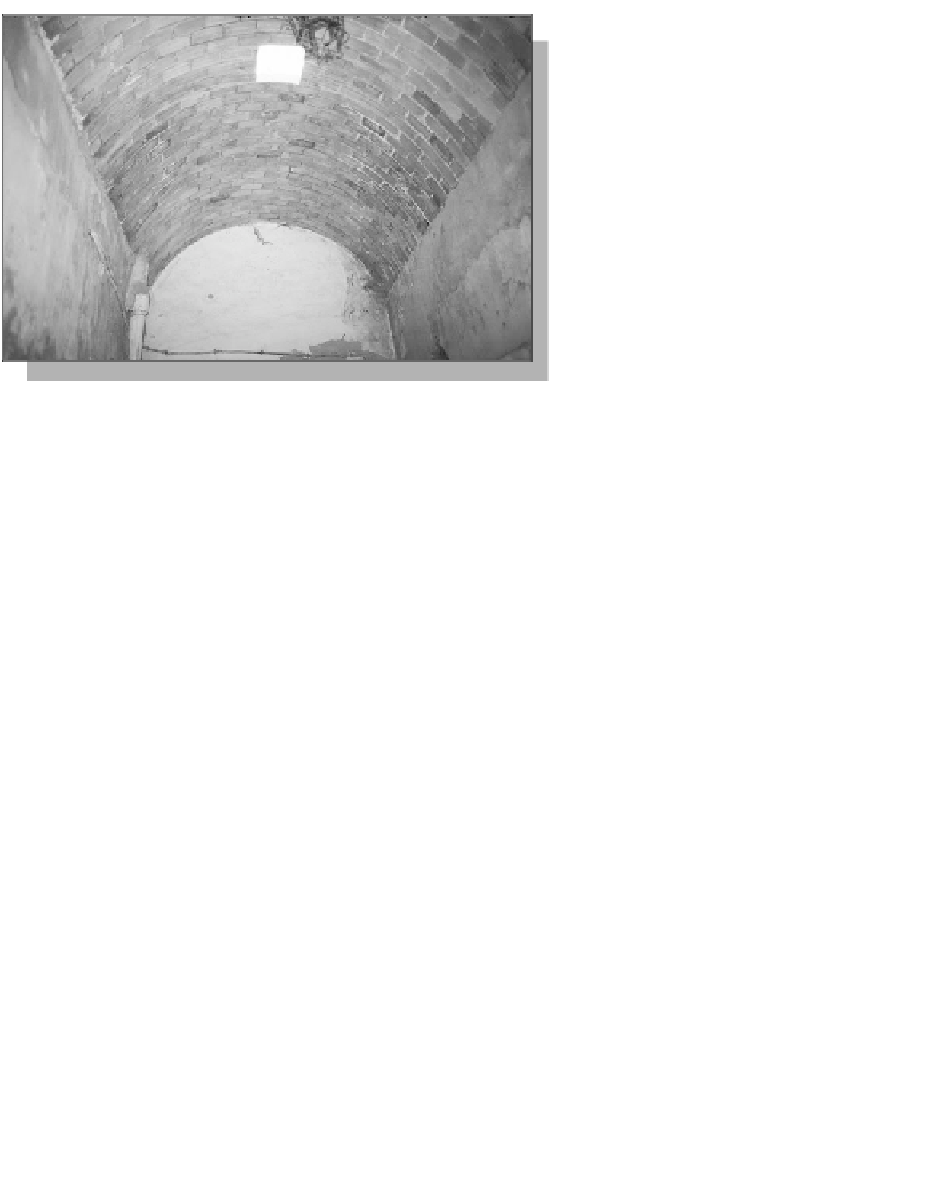Civil Engineering Reference
In-Depth Information
absorption and should therefore be ven-
tilated behind. If the outside surface is
going to be rendered, bricks fired at
lower temperatures should be used.
The inner leaf can be made of mid-
dle- or low-fired bricks. Such a differen-
tiation of brick quality was completely
normal until the 1950s, as energy-sav-
ing in production lowered costs. Today
the hardest-fired bricks are used in all
situations.
Low-fired and porous bricks must be
soaked before laying so that they do not
absorb all the moisture from the mortar,
as with ceramic tiles on a similar surface.
Low-fired brick binds well with clayey
binders such as hydraulic lime, but less
well with pure lime products (see Table
17.1).
The leaves are usually tied together
with steel wall ties. The cavity is filled
with insulation, preferably of mineral origin, such as perlite, loose light clinker, granulated
glass and vermiculite. In areas where there is heavy driving rain it pays to render the
inside of the outer leaf. Beams resting on the inner leaf are surrounded with impregnated
building paper.
A vapour-tight render or paint should be avoided on the outside, as it will quickly result
in frost damage. Good alternatives with open pores are hydraulic lime render and silicate
paint.
Figure 13.16: Structural vault in brick.
Earth structures
Earth structures consist of either rammed earth carried out on site between
shuttering, pisé, or earth blocks such as adobe. These are suitable for buildings
of domestic scale. The material is fire-proof in itself even with plant fibres
mixed in with it. Earth is also a good regulator of humidity. The oldest com-
plete earth building that exists in Europe, dating from 1270, is in the town of
Montbrison in central France. It now houses a library for moisture-sensitive
topics.
Earth buildings have many ecological precedents. Earth is a perfect material in
terms of resources, pollution and indoor climate, and when the building is no
longer needed, it reverts to its original material.
Earth has structural limitations as a building material as its compressive
strength is low. This is compensated for by building thicker walls. The increase
in the amount of material used does not really matter when the source of earth is
near the site.

